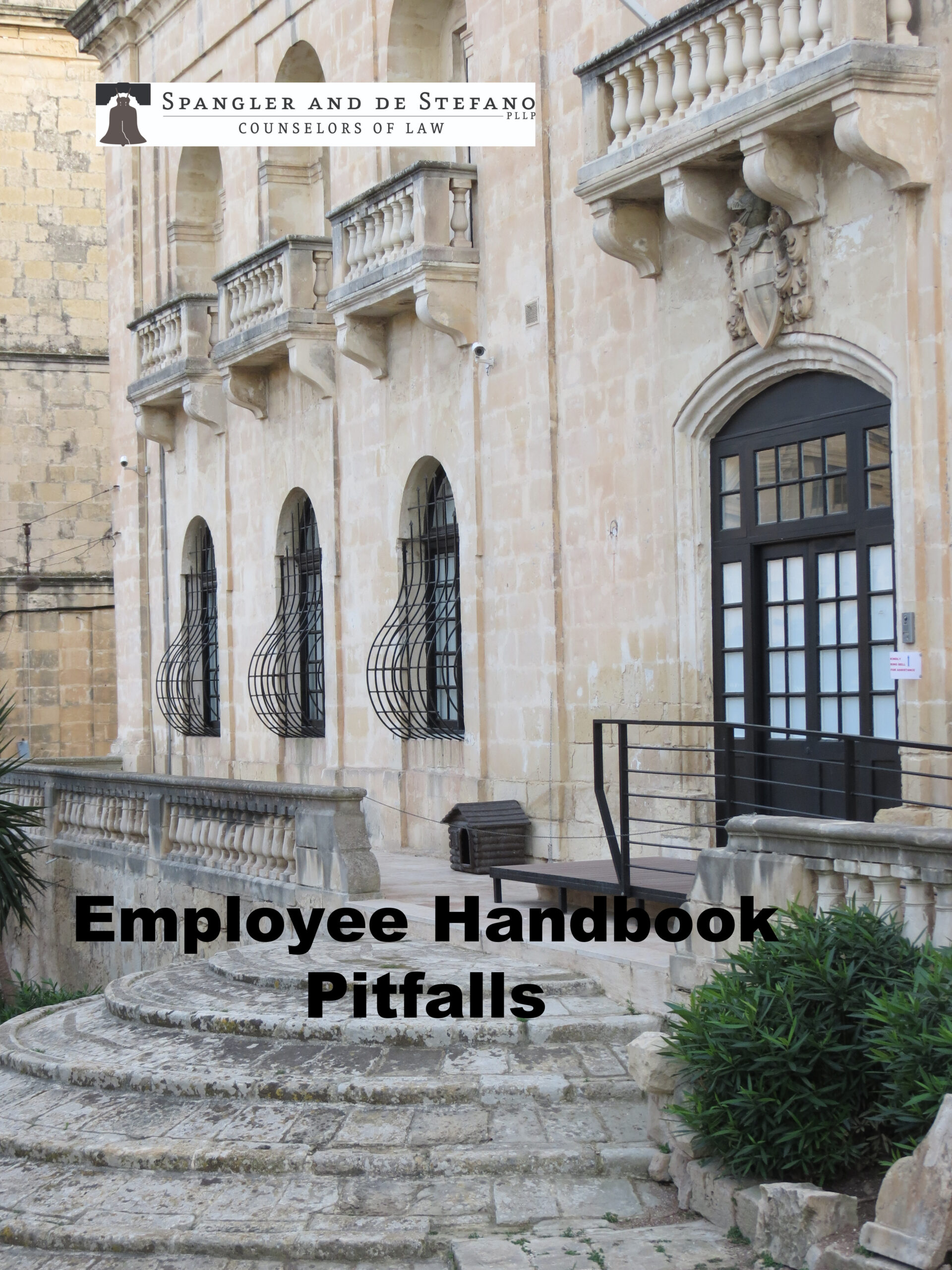Employee Handbook Pitfalls

Employee handbooks should not be finalized and then set in a drawer to gather dust. Instead, an employee handbook needs to be consulted, followed and revised. An employee handbook should be revised at a minimum one time per year. That is because laws continually change, which requires revisions to the handbook. In addition, circumstances change throughout the course of time in your business, which necessitates updates to the employee handbook.
If your business pulled your employee handbook off of the internet or from another business, now is the time to review it. A common mistake that we constantly see is employers who do not have 50 employees include a provision in the handbook regarding Federal Medical Leave Act (FMLA). If your employee handbook states that you provide FMLA to your employees, then you must provide FMLA to your employees even though you would not have been required to provide FMLA to your employees without you voluntarily agreeing to do so. It also should be noted that there are several rules as to how the 50 employees is counted under federal law. In other words, just because you have 50 employees on payroll does not mean that you have 50 employees as defined under FMLA, which would mean that your business would not be required to provide FMLA.
Another common mistake that we see with “cribbed” handbooks is the failure to include information about specific Minnesota laws in the employee handbook. There are several laws in Minnesota that an employer is required to provide in the employee handbook if the employer chooses to utilize an employee handbook. We often see that these laws are not included in the employee handbook, which is a violation of Minnesota law.
An additional example of an employer’s mistake is their failure to include language in the handbook that makes it clear under Minnesota law that the handbook does not create a contract. It is important to understand that a handbook has to comply with the Minnesota Supreme Court decision regarding the wording in handbooks so that the handbook does not create a contract. In other words, an employer has to be careful about not turning an at-will employee to a contract employee through their handbook.
Another important aspect of updating your handbook is circumstances within your company that require an update to your handbook. For example, an in-person office to a hybrid office setting to a remote office setting or any combination thereof. Another example is adding a part-time employee when you only had full-time employees and your handbook does not make a distinction for part-time benefits.
Finally, the Minnesota legislature has made numerous changes to laws that impact employers. If your handbook has not been updated to stay abreast of the changes, your handbook will be a liability to your business. In addition, there are criminal consequences to some employment laws. Therefore, it is vital that your handbook is updated each year to stay on top of changes that the legislature has made. In addition to legislative changes, your handbook also must be updated to be in compliance with changes to the rules that interpret the statutes and case law as determined by the Court of Appeals and the Minnesota Supreme Court as well as the 8th Circuit Court of Appeals and the United States Supreme Court.
Spangler and de Stefano, PLLP advises employers regarding employee handbooks.
The material contained herein is for informational purposes only, and is not intended to create or constitute an attorney-client relationship between Spangler and de Stefano, PLLP and the reader. The information contained herein is not offered as legal advice and should not be construed as legal advice.


